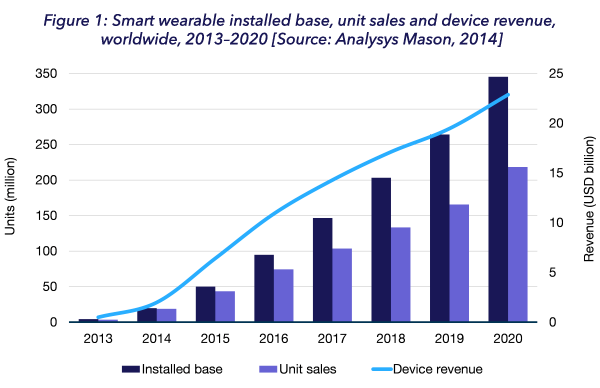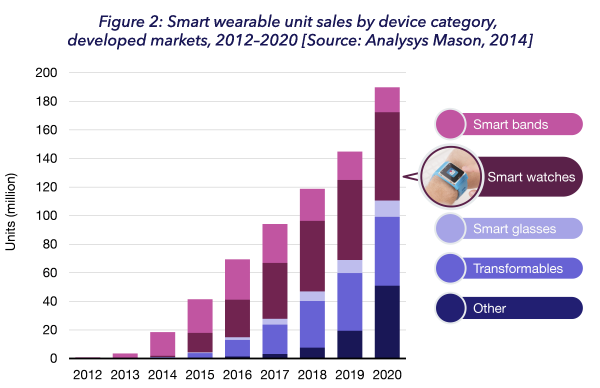The term ‘Wearable Electronics’ refers to any electronic device or product, which can be worn by a person to integrate computing in his daily activity or work and use technology to avail advanced features and characteristics. Revenue from the global wearable electronics market is expected to grow at a CAGR of 50% and surpass $22 Billion by 2020, driven primarily by smart watches like the Apple Watch.*


While this explosion of devices provides a multitude of new business opportunities, it also comes with its share of technical challenges for the enterprise. Here is how a mobile backend-as-a-service (MBaaS) can help solve some of the trickier challenges that enterprises will face.
- It’s all about native apps
Considerations such as battery life, smaller screen size, and less computing power are critical in the domain of wearable app development. Since wearable apps run directly on the wearable device, experience and performance on smaller form factor devices with relatively less computer power is harder to achieve. So with wearables, native apps are the primary (only) vehicle for software functionality. - An efficient middle-tier platform is important
Because the heavy lifting of computations and logic executions takes place outside the device, it becomes equally important to select a robust middle-tier platform such as an MBaaS, which supports any current or future wearable platforms. - MBaaS is the best solution to the fragmented wearables operating systems landscape
A major issue with the current wearables landscape is the absence of standards and this has caused fragmentation. Most manufacturers have attempted to solve interoperability with proprietary solutions. This has resulted with devices working well on their own, but struggling to co-exist in a highly integrated environment. It will take a while before the varied operating systems on the log tail of wearables standardize, but an MBaaS gives the capability to normalize business logic and app services functions today. - An MBaaS will provide the essential optimization layer on top of cloud-based systems
Another challenge is the need for wearables to connect to various cloud based systems. For instance, a fitness device will connect to a particular cloud based system to upload the individual records while also connecting to a different one to update social media accounts. The APIs of most of these cloud-based systems are still evolving, increasing the dependency on wearables to filter the information or even manipulate the data. This puts additional burden on those low computing devices and can result in performance issues. Again, MBaaS provides the perfect middle-tier solution to facilitate those connections. - An MBaaS can provide the data processing and business logic layer necessary to connect increasingly sophisticated wearables with back-end system
As the sophistication of wearables increases, they are not only required to retrieve information and present it “as is”, but users are also expecting them to orchestrate the data and perform intelligent processes to interact with third parties. For instance, a fitness device can capture an individual’s sleep data, eating and activity habits, and then send the information to multiple backend systems in a much more intelligent manner to optimize the interactions with the device. An MBaaS can play a crucial role in providing calculations, data orchestration, logical processes and data aggregation from multiple sources.When it comes to wearables, an MBaaS can also play a critical role when it comes to:
- Handling security with server-based authentication and authorization
- Managing credit card transactions
- Storing data captured by wearables (pictures, data, videos, audio and more)
- An MBaaS can provide the cloud-based middle tier layer sitting between wearables and help those devices interact with each other by capturing and translating the information, managing the data and negotiating security restrictions between devices.
As wearables become more ubiquitous and common in every aspect of modern life, they will increasingly need to be interconnected to each other to share and process information.
See how one of our developers created a Google Glass app using AnyPresence MBaaS and the Android SDK.
To learn more about how AnyPresence MBaaS can help you harness the new challenges presented by wearables and the Internet of Things, contact us.
*Source: Smart wearables: worldwide market trends, forecasts and strategies 2014–2020 by analysys mason